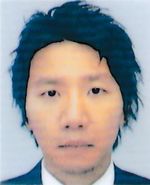Meeting
2016 Gastrointestinal Cancers Symposium

Department of Clinical Oncology, Kagawa University Faculty of Medicine, Kagawa, Japan
Yoshihiro Okita , Hironaga Satake , Hiroyuki Okuyama , Masato Kondo , Akira Miki , Takanori Watanabe , Yukimasa Hatachi , Masahito Kotaka , Shigeyoshi Iwamoto , Takeshi Kato , Akihito Tsuji
Background: Prognosis for locally advanced gastric cancer, such as clinical T4 disease, bulky nodal involvement, type 4 and large type 3 gastric cancer, was not satisfactory even by D2 gastrectomy followed by adjuvant chemotherapy. Neoadjuvant chemotherapy is another promising approach. In our phase I study, neoadjuvant chemotherapy of S-1 and oxaliplatin (SOX) had manageable toxicities and good pathological complete response rate (33%) in patients with locally advanced gastric cancer. Based on the results of this phase I study, we initiate a multi-institutional, single-arm, open label, phase II study (Neo G-SOX PII study). The aim of this study is to evaluate the efficacy and safety of the neoadjuvant chemotherapy of S-1 and oxaliplatin (SOX) followed by gastrectomy with D2/3 lymph node dissection; clinical T4; clinically resectable gastric cancer of type 4 or large type 3 (over 8 cm); bulky nodal involvement around major branched arteries to the stomach Methods: Eligibility criteria include histologically proven adenocarcinoma of the stomach; clinical T4; clinically resectable gastric cancer of type 4 or large type 3 (over 8 cm); bulky nodal involvement around major branched arteries to the stomach; resectable peritoneal dissemination (pathological CY1 or P1, except for clinical CY1 or P1). Patients receive two cycles of neoadjuvant chemotherapy with S-1 (80 mg/m2, p.o., days 1-14 followed by 1 week rest) and oxaliplatin (130 mg/m2 at day 1), followed by D2 or higher surgery with no residual disease. Patients with pathological R0/1 resection received S-1 (80 mg/m2, p.o., days 1-28 followed by 2 week rest) for 1 year as adjuvant chemotherapy. Primary endpoint is curative resection rate. Key secondary endpoints include pathological response, R0/1 resection rate, dose-intensity, overall survival, relapse free survival and safety. We set the threshold curative resection rate at 65% and the expected curative resection rate at 80%. Given a one-sided α of 0.1 and statistical power of 80%, 40 patients was required. Clinical trial information: UMIN000018661 Clinical trial information: UMIN000018661.
Disclaimer
This material on this page is ©2024 American Society of Clinical Oncology, all rights reserved. Licensing available upon request. For more information, please contact licensing@asco.org
2016 Gastrointestinal Cancers Symposium
Trials in Progress Poster Session
Trials in Progress Poster Session A: Cancers of the Esophagus and Stomach
Cancers of the Esophagus and Stomach
Multidisciplinary Treatment
UMIN000018661
J Clin Oncol 34, 2016 (suppl 4S; abstr TPS180)
10.1200/jco.2016.34.4_suppl.tps180
TPS180
O6
Abstract Disclosures
2024 ASCO Gastrointestinal Cancers Symposium
First Author: Rixci Ramirez
2024 ASCO Gastrointestinal Cancers Symposium
First Author: Zhi Peng
2023 ASCO Gastrointestinal Cancers Symposium
First Author: Hyung-Don Kim
2020 Gastrointestinal Cancers Symposium
First Author: Masato Kondo